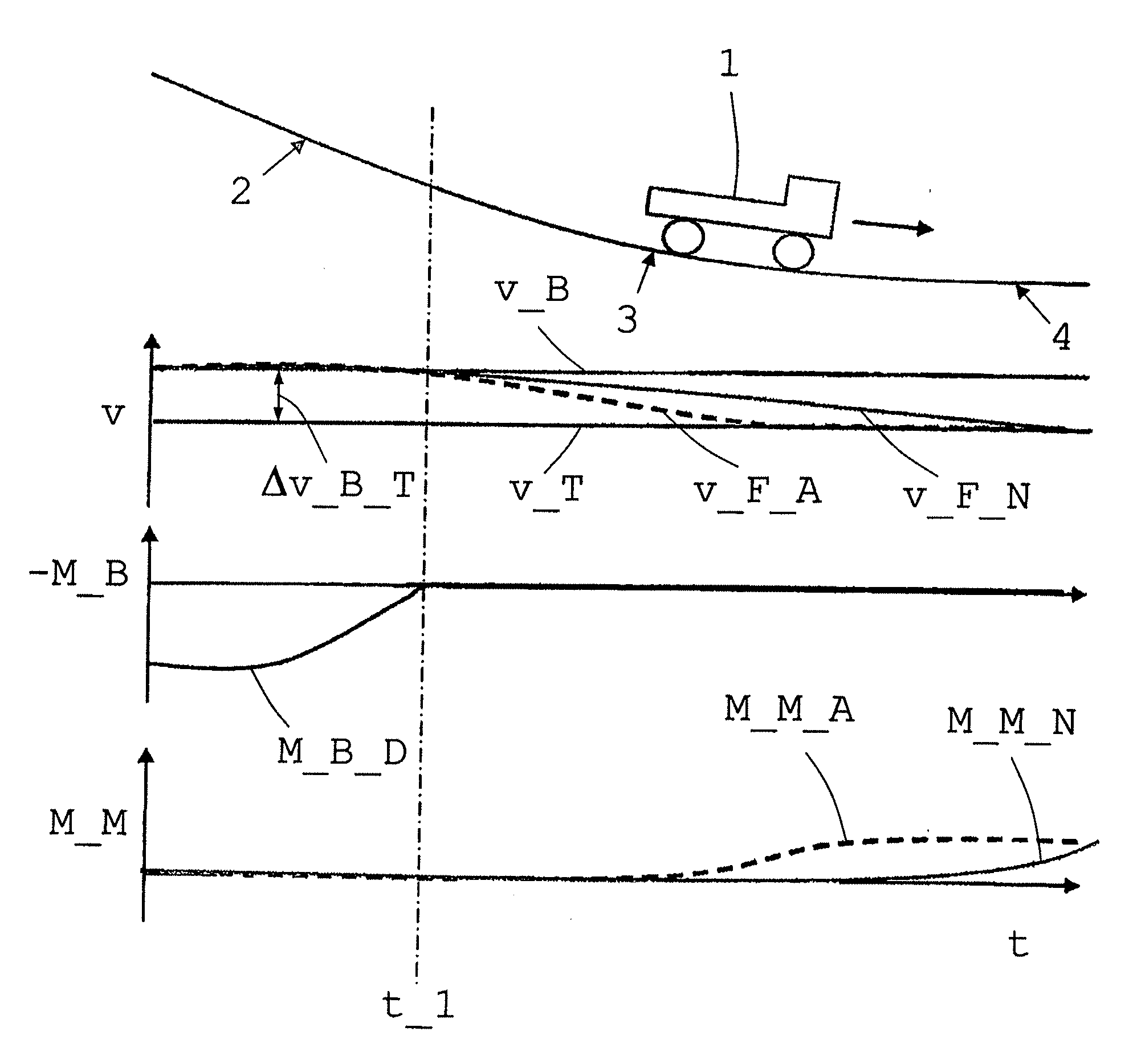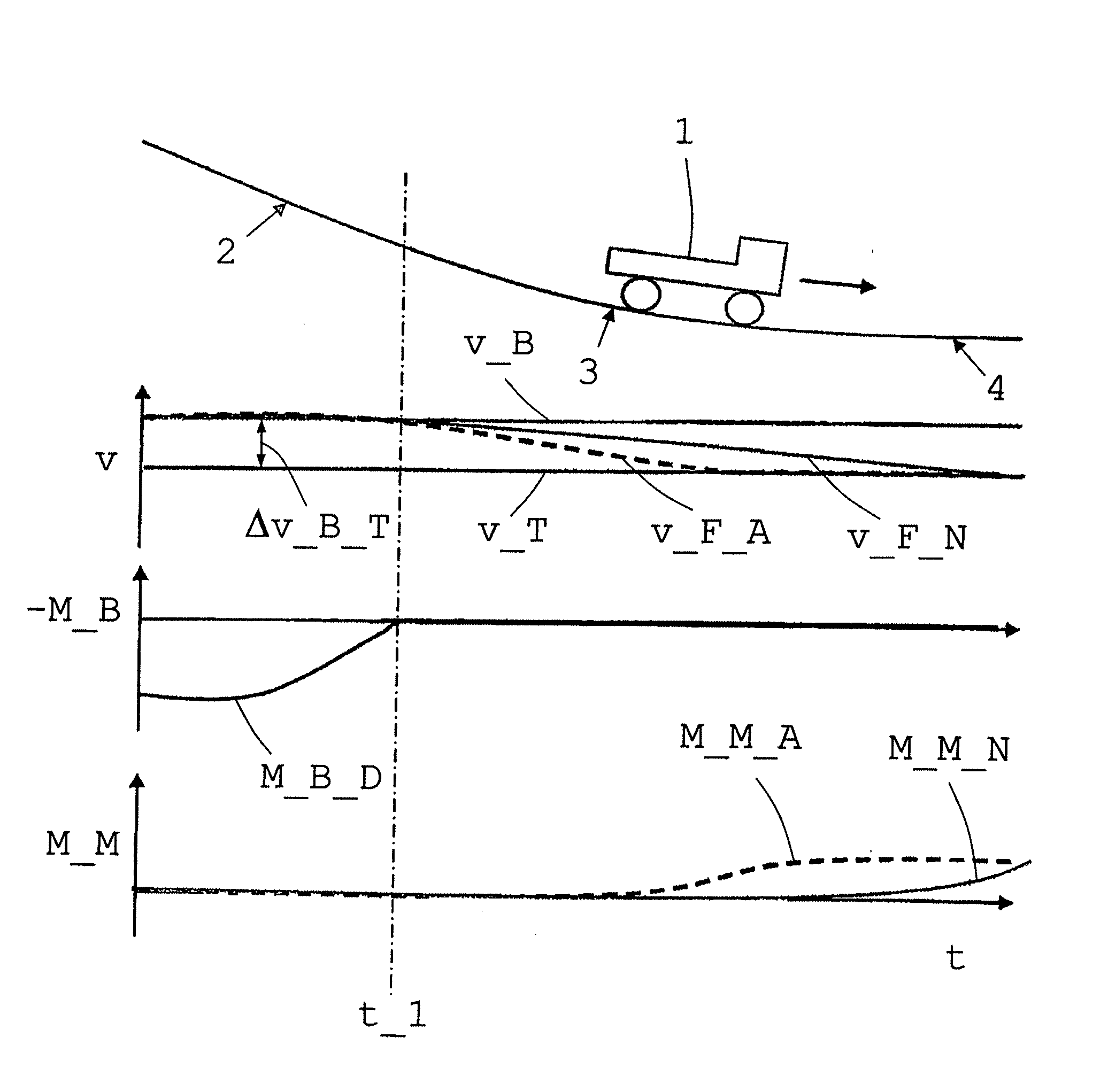Method for controlling a rolling or coasting function of a vehicle
a technology for rolling or coasting and vehicles, applied in mechanical devices, transportation and packaging, road transportation, etc., can solve the problems of not always correctly interpreting the driving situation, relatively complex and error-prone, and unnecessary shifting into neutral or interruption of the flow of power
- Summary
- Abstract
- Description
- Claims
- Application Information
AI Technical Summary
Benefits of technology
Problems solved by technology
Method used
Image
Examples
Embodiment Construction
[0042]The commercial vehicle has an internal combustion engine and an automated single- or multi-group transmission with dog-shifted gears and transmission controls. Furthermore, the drive train has an auxiliary brake system designed e.g. as a hydrodynamic or electrodynamic retarder, and a Tempomat / Bremsomat system as a drive speed control device. Vehicles with such drive trains are known per se; consequently, the following description is restricted to a method according to the invention for controlling the rolling or coasting function of such a vehicle.
[0043]The method according to the invention basically involves interrupting the flow of power in the drive train in thrust mode instigated by transmission controls as soon as possible after a retarder shuts off and before entering a flat area at a different time from the Tempomat's request for engine torque when driving on a downhill gradient section while the rolling or coasting condition is satisfied, taking into account the functi...
PUM
 Login to View More
Login to View More Abstract
Description
Claims
Application Information
 Login to View More
Login to View More - R&D
- Intellectual Property
- Life Sciences
- Materials
- Tech Scout
- Unparalleled Data Quality
- Higher Quality Content
- 60% Fewer Hallucinations
Browse by: Latest US Patents, China's latest patents, Technical Efficacy Thesaurus, Application Domain, Technology Topic, Popular Technical Reports.
© 2025 PatSnap. All rights reserved.Legal|Privacy policy|Modern Slavery Act Transparency Statement|Sitemap|About US| Contact US: help@patsnap.com


